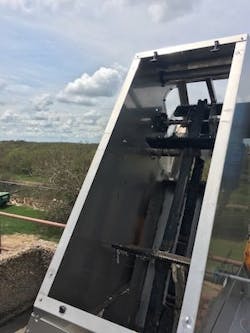About the author:
Steve Aiken is regional sales manager for Duperon Corp. Aiken can be reached at [email protected].
On Aug. 25, 2017, Hurricane Harvey slammed into the Texas Gulf shore, dumping an estimated 27 trillion gal of rain over Texas and Louisiana during a six-day period, including 60 in. of rain in parts of Texas. The Category 4 hurricane devastated the region, with winds blowing at a rate of 130 to 156 mph. Harvey affected nearly 13 million people from Texas, Louisiana, Mississippi, Tennessee and Kentucky, and damages caused by the catastrophic storm are estimated at $125 billion.
In Texas, the damage was particularly acute. Harvey took three powerful swings at the Texas shore, making landfall three times in six days and causing unprecedented flooding. By Sept. 1, one-third of the city of Houston was under water, 40,000 people were forced from their homes, and more than 200,000 Houston homes were severely damaged or destroyed.
Despite the destruction and devastation caused by the superstorm, Duperon wastewater screening technology installed in the cities of Cuero and Refugio, Texas—both approximately 150 miles southwest of Houston—continued operating. The FlexRake bar screens, installed at both locations as well as dozens of other sites in and around Houston, remove objects like rags, paper, plastics, and metals to prevent damage and clogging of downstream treatment equipment, piping and accessories. Both communities found virtually no damage to their wastewater screening equipment, despite the gravity of the storm’s impact.
City of Cuero, Texas
In the midst of Hurricane Harvey, the Guadalupe River in Cuero, Texas, swelled to water levels of 44.25 ft, and the storm damage was extensive to the community of 8,500 people.
“[Harvey] was blowing roofs off like nothing,” one resident said of the storm damage in her hometown. The city essentially was an island on the Tuesday morning after the storm; with the exception of a section of one highway, all roads leading into Cuero were closed.
The bar screen was installed at the Cuero Wastewater Treatment Plant in April 2015. The unit, which is 34-ft tall and 32-in. wide, is set at a 25-degree angle from vertical. With teardrop-shaped bars, a slotted opening with 50% open screening area and continuous cleaning using multiple scrapers reduce the regular maintenance on the equipment and lower energy consumption. These qualities were helpful during and after Harvey hit Houston.
Despite the significant flooding and 140-mph winds during the hurricane, the FlexRake was undamaged. Wayne Berger, city of Cuero plant supervisor expressed little surprise at the durability of the system.
“We experienced very little out of the ordinary,” he said. “We have normal operations 99% of the time with this equipment and Hurricane Harvey was no exception, even with the increased flow due to flooding.”
City of Refugio, Texas
In Refugio, Texas, which is home to approximately 7,000 people, winds crumpled a Shell gas station into a pile of yellow and white metal. Cyclone winds flipped mobile homes upside down, tore holes through roofs and living room walls and toppled trees, exposing tentacle-like roots. Shelters had to be set up for nearly all residents. Estimates are that virtually every structure in Refugio sustained some damage. But, as in Cuero and dozens of other sites around Houston, the mechanically cleaned bar screen, which had been installed earlier that month, weathered the storm.
The screen in Refugio is the same pre-engineered product as the FPFS used in Cuero as it was designed for plants of 1 million gal per day (mgd) or less average flow. Average daily flow at the Refugio Wastewater Treatment plant is 200,000 gal per day but is rated for 4 mgd at peak flows. The Refugio unit uses a different configuration than Cuero as it is 5 ft tall and 2 ft wide, set at a 30-degree angle from vertical.
Gabriel Morales, manager of operations and superintendent for the plant, echoed Berger’s comments on the durability of the FlexRake system.
“The only thing that happened is that one panel you take off to clean the rakes was blown off. We haven’t found it yet,” Morales said. The missing panel did not hinder the effectiveness of the equipment and was easy to replace. And even with winds up to 130 mph, the system, which is set approximately 20 ft high, carried on as usual. “None of the rakes inside were damaged,” Morales added.
In addition to handling the wastewater needs of Refugio residents, the plant handles waste from several nearby truck stops, Morales said. Nevertheless, both systems showed remarkable durability. The cities of Refugio and Cuero are among more than two dozen sites using Duperon equipment in and around the Houston area stretching from Galveston to Egypt, Texas.

